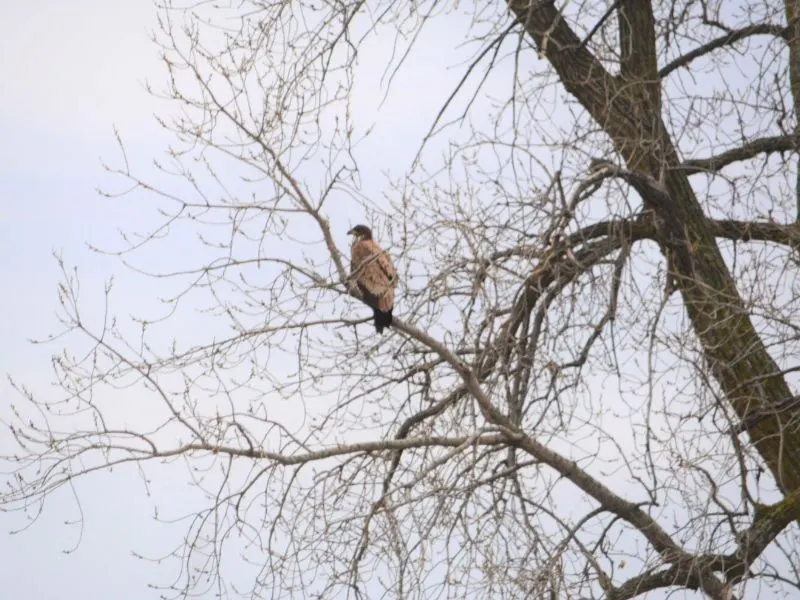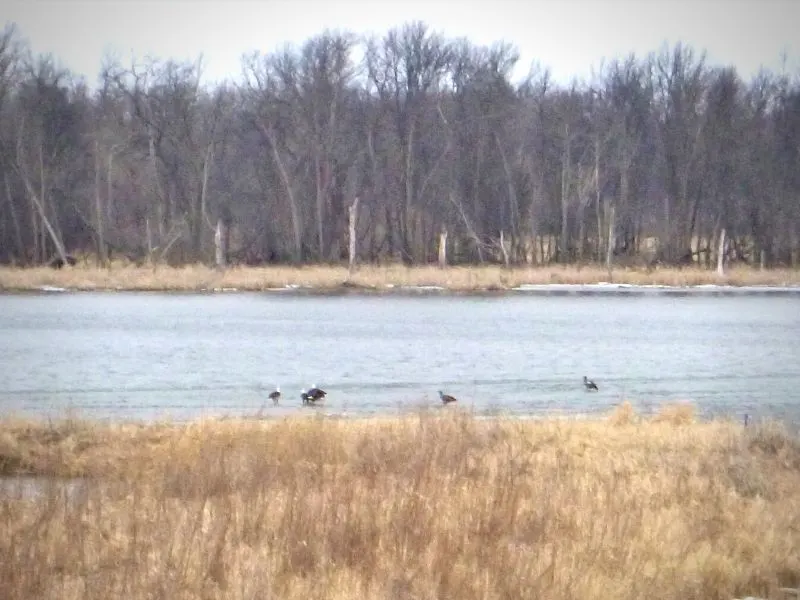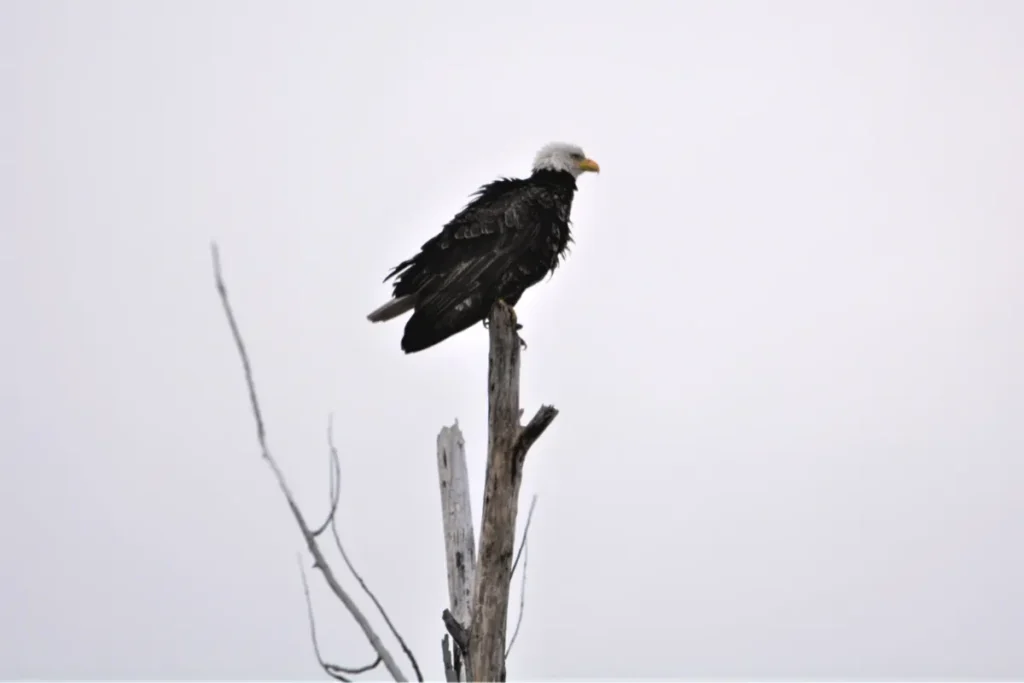Contributed by Peg Furshong, CURE’s Director of Programs

 Having grown up in the mountains of Western Montana, a place where you would expect to see all sorts of wildlife, I continue to be amazed at the numbers of bald eagles that reside in the Upper Minnesota River Valley. I commute about 40 miles to work each day, and it is rare when I do not witness eagles flying overhead along the river valley.
Having grown up in the mountains of Western Montana, a place where you would expect to see all sorts of wildlife, I continue to be amazed at the numbers of bald eagles that reside in the Upper Minnesota River Valley. I commute about 40 miles to work each day, and it is rare when I do not witness eagles flying overhead along the river valley.
March is here, and it is said to be one of the best months of the year for viewing bald eagles in Minnesota. One might wonder how these amazing birds survive the winters in Minnesota when most of the free-flowing waterways are frozen. They tend to locate near waters that have been dammed and have some access to surface water year-round, like in downtown Granite Falls. While a typical diet of choice might consist primarily of fish, eagles also catch mammals and birds and dine on carrion. In my neighborhood, it is common to see eagles and owls near sugar beets storage areas foraging for food.
As Spring’s freeze-thaw cycles commence, prairie potholes provide new food sources for eagles. Often the shallow potholes will freeze out the fish and other aquatic life, and they will float to the surface. Migrating birds will stop, recharge and fuel up for the next leg of the journey. As a result, we see huge influxes of eagles every few years for about a week or two. In 2021, eagles numbered in the hundreds for about a week.
Updated numbers are hard to find, but in 2007, the MN DNR estimated about 2300 nesting bald eagles in Minnesota, meaning roughly 1,000 nests. Paired birds engage in aerial acrobatics, circling high in the sky, locking talons, and then tumbling and spinning towards the ground, separating only moments before a potential crash. Late February into early March, you might catch a glimpse of their courtship flight. Pairs share the role of incubating eggs on the nest. Eggs typically hatch after 35 days, and the young remain in the nest for 9-15 weeks. On February 16, the MN DNR’s EagleCam posted a second egg arrived in the nest. In mid-March, we will hopefully see two new chicks.
In Minnesota, we are fortunate to be home to the National Eagle Center in Wabasha. They have great resources to learn more about eagles and other raptors.
Another great partner in raptor recovery has been the University of Minnesota’s Raptor Center. Injured birds are brought to the center with the goal of rehabilitating them and releasing them back to the wild. Several folks in the CURE network are champions for raptors. It is not uncommon to get an email, text, or Facebook message wanting to know if someone is headed to the Twin Cities to see if one might have room for an injured bird. Lead poisoning from abandoned carcasses continues to be one of the critical threats for many raptors.
The bald eagle is listed as a species of special concern in Minnesota. Still, its dramatic increase during the past few years led to the Federal de-listing of the Bald Eagle in 2007. The recovery of eagles has been a joint effort with many partners. The Nongame Wildlife Program spends about $50,000 per year on bald eagle conservation efforts.
On occasion, I am asked about Golden Eagles. While it is possible to see them on their way through, Golden Eagles typically do not nest in Minnesota. Still, they are found further north in Canada – especially near the shores of Hudson Bay.
There are many fascinating facts about eagles; click here to learn more about their characteristics and habits.
The next time you see an eagle, remember it was a team effort to bring them back. You can help preserve the eagles by donating to the Nongame Wildlife Checkoff on your Minnesota tax forms. You can also help eagles by donating to The Raptor Center, University of Minnesota, 1920 Fitch Avenue, St. Paul, Minnesota 55108.


